Manage personal performance and development traniing course

Manage personal performance and development traniing course
How to manage personal performance in a workplace
Performance standards are essential to ensure that an employee is successfully performing their job duties. They provide a reliable measure of success, giving clear indicators of what good performance looks like and how it is expected to be achieved. Performance management systems can also aid in this goal, increasing employee engagement while motivating them towards meeting the desired standard.
When measuring performance, there are four basic elements to consider: workload/output,
efficiency, effectiveness/outcome, and productivity. These metrics allow for concrete evaluation against accepted levels of performance. When criteria are met, employees will often experience feelings of achievement and worth within their role – allowing for significant growth both individually and as part of a team.
Organisational performance standards provide clear indicators of success, often taking the form of numerical targets that must be achieved. For example, it might be necessary for 80% or more of students to achieve mastery level on an assessment. It is also important to recognise employees who perform well, which can come in the form of formal awards, bonuses or gifts. Furthermore, meeting requirements for acceptable behaviour and workplace culture is integral to being successful in a job setting.
When considering performance success within an organisation, there are five key performance indicators (KPIs) that should be monitored closely: revenue growth; revenue per client; profit margin; client retention rate; and customer satisfaction. These KPIs can give teams a good indication as to how their efforts are translating into tangible results.
About this course
- Training Provider: OHS.com.au
- Location: Online
- Course length: Varies average 20 minutes
- Time: Self-paced
- Certification / Accreditation: Certificate of Completion
Background – How to measure individual performance in a workplace?
High-performing organisations depend on performance management to drive corporate success and reach strategic goals. By using quantitative data to measure performance, employers and employees both benefit – because it allows for targeted objectives, fair assessments, and proactive interventions that lead to improved results. Companies who use business intelligence related to performance measures have seen demonstrable successes in areas like employee motivation, demonstrated opportunities, and goal setting. It enables managers and executives with the insights they need in order to meet set targets in a timely manner. Striving towards excellence is possible with the right tools—including targeted performance management.
Performance management must satisfy both task and people requirements in order to be effective.Task matters involve strategy and structure, while people considerations are related to the development and motivation of teams. It is a continuous process that moves from one step to the next. For your convenience, we have divided this process into five steps, each of which has components for tasks and people.
Organisational performance management can be gauged across five specific indicators—input, output, efficiency, quality and outcome. To measure individual performance, it is recommended to set measurable objectives and key results (OKRs) and individual goals; benchmark performance by implementing short ‘sprints’ of work; utilize project or task management tools; track employee training completion; conduct skills gap analysis; create customized metrics for evaluation and collect customer feedback via 360-degree reviews.
Performance standards are essential tools for facilitating effective communication between the employer and employee. They outline clear expectations regarding desired performance, enabling the employee to understand their roles and responsibilities better. For instance, the company might define 'communication' as a key performance standard, clarifying what this means within the context of their business and outlining how employees can effectively adhere to it. Additionally, performance standards provide employers with well-defined means of evaluating employee progress.
Course Outline
OHS’s Manage Personal Performance training course is designed for team leaders and managers who are tasked with managing the productivity of individuals or teams in the workplace, Performance Management is an invaluable course. The training course explores the processes associated with performance management cycles, from goal setting and work delegation to performance reviews and rewards. You will be equipped with the skills and confidence to drive a successful performance culture and to address potential issues of diminished engagement.
Learning Outcomes
- Monitor and assess performance levels.
- Create objectives that are consistent with organisational values and goals.
- Deliver effective feedback and guarantee that expected performance standards are attained.
- Engage in fruitful conversations about the execution of job tasks.
- Identify and address any concerns related to accomplishing duties successfully.
SKU:
Course Highlights:
- On-demand Training
- Complete on Any Device
- Quality Focused
- Fast Certification
- Tax Deductable
- 100% Online
- 24 Months Unlimited Course Access
- Self-print Certificate
Couldn't load pickup availability

"Very detailed information, with the ability to shuffle and skip past parts that I knew. I actually enjoyed doing it. I was refreshed after completing the course. All in all, a fantastic refresher course."
Luke W."Straight forward and easy to understand. Thanks, OHS this is my second Refresher course."
Anonymous"Quick & relatively easy, done from the comfort of home."
David B"Really great courses on OHS website, would use this site again."
RhysADDITIONAL EXTRA BONUSES with OHS.com.au
Claim up to $1271.95 worth of Extra Bonuses
with every purchase
- Your personal copy of Safety Legends E-Book (value $39.95)
- $100 off your first case from Naked Wines (value $100)
- Upto 350,000 Bonus AMEX Frequent Flyer points* (value $1000)
- Complimentary Access to two online courses** (value $132)
$1271.95 EXTRA VALUE - JUST FOR YOU INSIDE!
* New customers when you successfully sign up for a new personal / business credit card ** Indigenous Cultural Awareness / Impacts of Climate Change coursesDescription
How to manage personal performance in a workplace
Performance standards are essential to ensure that an employee is successfully performing their job duties. They provide a reliable measure of success, giving clear indicators of what good performance looks like and how it is expected to be achieved. Performance management systems can also aid in this goal, increasing employee engagement while motivating them towards meeting the desired standard.
When measuring performance, there are four basic elements to consider: workload/output,
efficiency, effectiveness/outcome, and productivity. These metrics allow for concrete evaluation against accepted levels of performance. When criteria are met, employees will often experience feelings of achievement and worth within their role – allowing for significant growth both individually and as part of a team.
Organisational performance standards provide clear indicators of success, often taking the form of numerical targets that must be achieved. For example, it might be necessary for 80% or more of students to achieve mastery level on an assessment. It is also important to recognise employees who perform well, which can come in the form of formal awards, bonuses or gifts. Furthermore, meeting requirements for acceptable behaviour and workplace culture is integral to being successful in a job setting.
When considering performance success within an organisation, there are five key performance indicators (KPIs) that should be monitored closely: revenue growth; revenue per client; profit margin; client retention rate; and customer satisfaction. These KPIs can give teams a good indication as to how their efforts are translating into tangible results.
About this course
- Training Provider: OHS.com.au
- Location: Online
- Course length: Varies average 20 minutes
- Time: Self-paced
- Certification / Accreditation: Certificate of Completion
Background – How to measure individual performance in a workplace?
High-performing organisations depend on performance management to drive corporate success and reach strategic goals. By using quantitative data to measure performance, employers and employees both benefit – because it allows for targeted objectives, fair assessments, and proactive interventions that lead to improved results. Companies who use business intelligence related to performance measures have seen demonstrable successes in areas like employee motivation, demonstrated opportunities, and goal setting. It enables managers and executives with the insights they need in order to meet set targets in a timely manner. Striving towards excellence is possible with the right tools—including targeted performance management.
Performance management must satisfy both task and people requirements in order to be effective.Task matters involve strategy and structure, while people considerations are related to the development and motivation of teams. It is a continuous process that moves from one step to the next. For your convenience, we have divided this process into five steps, each of which has components for tasks and people.
Organisational performance management can be gauged across five specific indicators—input, output, efficiency, quality and outcome. To measure individual performance, it is recommended to set measurable objectives and key results (OKRs) and individual goals; benchmark performance by implementing short ‘sprints’ of work; utilize project or task management tools; track employee training completion; conduct skills gap analysis; create customized metrics for evaluation and collect customer feedback via 360-degree reviews.
Performance standards are essential tools for facilitating effective communication between the employer and employee. They outline clear expectations regarding desired performance, enabling the employee to understand their roles and responsibilities better. For instance, the company might define 'communication' as a key performance standard, clarifying what this means within the context of their business and outlining how employees can effectively adhere to it. Additionally, performance standards provide employers with well-defined means of evaluating employee progress.
Course Outline
OHS’s Manage Personal Performance training course is designed for team leaders and managers who are tasked with managing the productivity of individuals or teams in the workplace, Performance Management is an invaluable course. The training course explores the processes associated with performance management cycles, from goal setting and work delegation to performance reviews and rewards. You will be equipped with the skills and confidence to drive a successful performance culture and to address potential issues of diminished engagement.
Learning Outcomes
- Monitor and assess performance levels.
- Create objectives that are consistent with organisational values and goals.
- Deliver effective feedback and guarantee that expected performance standards are attained.
- Engage in fruitful conversations about the execution of job tasks.
- Identify and address any concerns related to accomplishing duties successfully.
- Money Back Guarantee
- Save Time & Money
- Tax Deductible
- 1000's Trained Each Month
- Quality-Focused
- Peer Reviewed Courses
- Trusted Industry Partner
- Fast Certification
- 60 Day Guarantee
- *See refund policy


Got multiple people needing to do a course? We will get back to you within a day!
Student Reviews

Couldn't load pickup availability

Contact Us!
Contact form
ADDITIONAL EXTRA BONUSES with OHS.com.au
Claim up to $1271.95 worth of Extra Bonuses
with every purchase
- Your personal copy of Safety Legends E-Book (value $39.95)
- $100 off your first case from Naked Wines (value $100)
- Upto 350,000 Bonus AMEX Frequent Flyer points* (value $1000)
- Complimentary Access to two online courses** (value $132)
$1271.95 EXTRA VALUE - JUST FOR YOU INSIDE!
* New customers when you successfully sign up for a new personal / business credit card ** Indigenous Cultural Awareness / Impacts of Climate Change coursesDescription
How to manage personal performance in a workplace
Performance standards are essential to ensure that an employee is successfully performing their job duties. They provide a reliable measure of success, giving clear indicators of what good performance looks like and how it is expected to be achieved. Performance management systems can also aid in this goal, increasing employee engagement while motivating them towards meeting the desired standard.
When measuring performance, there are four basic elements to consider: workload/output,
efficiency, effectiveness/outcome, and productivity. These metrics allow for concrete evaluation against accepted levels of performance. When criteria are met, employees will often experience feelings of achievement and worth within their role – allowing for significant growth both individually and as part of a team.
Organisational performance standards provide clear indicators of success, often taking the form of numerical targets that must be achieved. For example, it might be necessary for 80% or more of students to achieve mastery level on an assessment. It is also important to recognise employees who perform well, which can come in the form of formal awards, bonuses or gifts. Furthermore, meeting requirements for acceptable behaviour and workplace culture is integral to being successful in a job setting.
When considering performance success within an organisation, there are five key performance indicators (KPIs) that should be monitored closely: revenue growth; revenue per client; profit margin; client retention rate; and customer satisfaction. These KPIs can give teams a good indication as to how their efforts are translating into tangible results.
About this course
- Training Provider: OHS.com.au
- Location: Online
- Course length: Varies average 20 minutes
- Time: Self-paced
- Certification / Accreditation: Certificate of Completion
Background – How to measure individual performance in a workplace?
High-performing organisations depend on performance management to drive corporate success and reach strategic goals. By using quantitative data to measure performance, employers and employees both benefit – because it allows for targeted objectives, fair assessments, and proactive interventions that lead to improved results. Companies who use business intelligence related to performance measures have seen demonstrable successes in areas like employee motivation, demonstrated opportunities, and goal setting. It enables managers and executives with the insights they need in order to meet set targets in a timely manner. Striving towards excellence is possible with the right tools—including targeted performance management.
Performance management must satisfy both task and people requirements in order to be effective.Task matters involve strategy and structure, while people considerations are related to the development and motivation of teams. It is a continuous process that moves from one step to the next. For your convenience, we have divided this process into five steps, each of which has components for tasks and people.
Organisational performance management can be gauged across five specific indicators—input, output, efficiency, quality and outcome. To measure individual performance, it is recommended to set measurable objectives and key results (OKRs) and individual goals; benchmark performance by implementing short ‘sprints’ of work; utilize project or task management tools; track employee training completion; conduct skills gap analysis; create customized metrics for evaluation and collect customer feedback via 360-degree reviews.
Performance standards are essential tools for facilitating effective communication between the employer and employee. They outline clear expectations regarding desired performance, enabling the employee to understand their roles and responsibilities better. For instance, the company might define 'communication' as a key performance standard, clarifying what this means within the context of their business and outlining how employees can effectively adhere to it. Additionally, performance standards provide employers with well-defined means of evaluating employee progress.
Course Outline
OHS’s Manage Personal Performance training course is designed for team leaders and managers who are tasked with managing the productivity of individuals or teams in the workplace, Performance Management is an invaluable course. The training course explores the processes associated with performance management cycles, from goal setting and work delegation to performance reviews and rewards. You will be equipped with the skills and confidence to drive a successful performance culture and to address potential issues of diminished engagement.
Learning Outcomes
- Monitor and assess performance levels.
- Create objectives that are consistent with organisational values and goals.
- Deliver effective feedback and guarantee that expected performance standards are attained.
- Engage in fruitful conversations about the execution of job tasks.
- Identify and address any concerns related to accomplishing duties successfully.
- Money Back Guarantee
- Save Time & Money
- Tax Deductible
- 1000's Trained Each Month
- Quality-Focused
- Peer Reviewed Courses
- Trusted Industry Partner
- Fast Certification
- 60 Day Guarantee
- *See refund policy
Student Reviews

Course Highlights:
- On-demand Training
- Complete on Any Device
- Quality Focused
- Fast Certification
- Tax Deductable
- 100% Online
- 24 Months Unlimited Course Access
- Self-print Certificate
Couldn't load pickup availability

"Very detailed information, with the ability to shuffle and skip past parts that I knew. I actually enjoyed doing it. I was refreshed after completing the course. All in all, a fantastic refresher course."
Luke W."Straight forward and easy to understand. Thanks, OHS this is my second Refresher course."
Anonymous"Quick & relatively easy, done from the comfort of home."
David B"Really great courses on OHS website, would use this site again."
Rhys


Are you from a large organisation? Contact us for a group quote!
 Checkout securely with
Checkout securely with
 1300 307 445
1300 307 445

